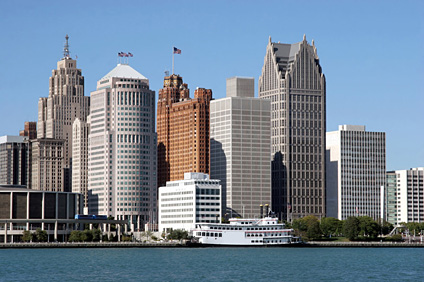Contents
The term “priority debt” is one that you are likely to hear repeatedly in a Chapter 7 or Chapter 13 bankruptcy proceeding.
What does it mean?

Priority debts are paid ahead of general unsecured creditors such as credit card debt, medical bills and other unsecured, non-priority creditors.
A priority debt in bankruptcy is one that must be paid by the Chapter 7 or Chapter 13 Trustee prior to the payment of non-priority debt.
Okay, what does that mean?
Let’s discuss.
Bankruptcy Trustees and the Payment of Claims
In either a Chapter 7 or Chapter 13 bankruptcy case, an individual known as a Trustee is appointed by the U.S. Bankruptcy Court.
A Chapter 7 Trustee seizes and liquidates the non-exempt property (if any) of the debtor filing the bankruptcy for the benefit of the debtor’s creditors.
This means that the Chapter 7 Bankruptcy Trustee’s job is take your stuff if he or she can and to sell it off in order to generate a pool of money with which your creditors are paid.
When the Chapter 7 Trustee does successfully generate a pool funds from the recovery of fraudulent transfers or preference actions or the liquidation of property, he or she will first pay the fees of professionals retained in the effort (lawyers, realtors, appraisers, etc.).
The Chapter 7 Trustee will then retain his or her own percentage-based fee from the amount remaining after those expenses are paid.
Whatever is left over is then distributed to the creditors of the debtor who filed the Chapter 7 in a certain priority order mandated by the U.S. Bankruptcy Code.
The Bankruptcy Code is the Federal statute that governs the bankruptcy process in the United States.
In a Chapter 13 bankruptcy, no property is ever seized or liquidated. The goal is the reorganization of debt rather than the flat-out, full discharge provided by a Chapter 7. It is a personal version of what businesses do when they file for Chapter 11 bankruptcy.
The Chapter 13 Trustee’s job is to receive from the debtor each a month a payment equivalent to the amount of net income remaining in the debtor’s household after necessary monthly expenses are accounted for
The Chapter 13 Trustee then distributes that money, first, for the so-called “administrative expenses” of the case (the fees of the debtor’s attorney and the percentage-based fee of the Trustee him- or herself).
The remaining funds are then distributed to the debtor’s creditors—in priority order.
Priority Debt: The List
Section 507 of the Bankruptcy Code describes the debts that are considered to be priority debts in Chapter 7 or Chapter 13 bankruptcy cases.
The priority debts are (in brief):
- Domestic support obligations, such as child or spousal support;
- The Trustee’s fees and expenses;
- Claims of Federal reserve banks in specific situations;
- Claims for up to $10,000 for wages or sale commissions owed to employees within 180 days of the filing of the bankruptcy;
- Unsecured claims for contributions to employee benefit plans;
- Claims against farmers or fishermen by grain storage or fish processing facilities;
- Claims of individuals up to $1,800 for deposits made to the debtor for the purchase, lease, or rental of property or services not delivered or provided;
- Unsecured governmental claims for:
- Income taxes;
- Property taxes;
- Employment taxes;
- Excise taxes;
- Customs duties.
- Claims of Federal depository institutions based upon a commitment by the debtor to maintain the institution’s operating capital;
- Claims for personal injury or death resulting from the operation of a motor vehicle or vessel while drunk or drugged.
Priority Debt Payment in Chapter 7 Bankruptcies
Section 726 of the Bankruptcy Code describes the order in which claims are paid by a Chapter 7 Trustee in a Chapter 7 bankruptcy case.
Any creditor or claimant who fails to file a proof of claim in a Chapter 7 bankruptcy case when notified of the need to so by the Trustee will receive no distribution.
If the priority debt is non-dischargeable, such as is the case with domestic support obligations in Chapter 7, it will simply survive the bankruptcy and remain collectible post-discharge.
The Trustee pays filed and allowed claims in this order:
- Priority debt, in the order listed above;
- Timely filed claims (i.e., filed by the Trustee’s deadline);
- Untimely, late-filed claims;
- Claims for fines, penalties, forfeitures, and exemplary or punitive damages;
- Claims for payment of interest;
- The debtor.
Yes, the debtor who filed the Chapter 7 bankruptcy is on the list. If there is a surplus of funds remaining after the Trustee distributes to everyone else, the debtor gets the balance.
Generally speaking, unless this is likely or certain to occur, the debtor does not have standing to object to proofs of claim in Chapter 7 bankruptcy. Only the Trustee does.
Priority Debts in Chapter 13 Bankruptcy Cases
Payment of debt in priority order is exactly what happens on a monthly basis during the course of a 3-5-year Chapter 13 bankruptcy plan.
Distributions to creditors in Chapter 7 cases are reasonably rare as Chapter 7 Trustees do not, in the majority of Chapter 7 cases, manage to recover any funds for the creditors.
Not so in a Chapter 13, in which the debtor makes a monthly payment to the Chapter 13 Trustee exactly for this purpose.
The debtor must, in a Chapter 13, file a Chapter 13 payment plan, drafted by the debtor’s bankruptcy attorney, which proposes to pay X amount per month and which proposes that creditors be paid X amount monthly from that payment, and in which order.
The order of payment must follow the requirements of the Bankruptcy Code and the Local Court Rules of the Bankruptcy Court.
In the Eastern District of Michigan, the order of Chapter 13 Trustee payment distribution is as follows:
- Trustee’s fees;
- Administrative expenses of the case, including the debtor’s attorney’s fees;
- Continuing secured claims;
- Arrearages on secured claims;
- Secured claims on which the last payment will become due within the Plan’s duration;
- Executory contracts and leases that are assumed rather than rejected;
- Priority unsecured claims;
- Non-priority unsecured claims.
Notice that priority debt is way down near the bottom, here.
One of the primary reasons that people file Chapter 13 bankruptcies is to bring current a home mortgage payment under threat of foreclosure, or to conduct similar reorganization of otherwise secured debt or contractual liability.
These matters are attended to first and foremost in a Chapter 13. However, “priority debt” still means priority debt in Chapter 13 bankruptcy as well.
100% of all priority debt must be paid in full in a Chapter 13, within the duration of the Plan.
Thus, the debtor’s plan payment must be sufficiently large each month to pay Trustee’s fees, his or her bankruptcy attorney’s fees, to do whatever needs to be one with secured debt, and then to pay off 100% of priority debt—and leave at least a penny for the non-priority unsecured creditors after that.
Given that, if you owe $100,000 to the IRS or in child support arrearages, this will balloon your required monthly plan payment enormously.
This is, however, one of the advantages of Chapter 13: you may owe $100,000 in child support, but you get to pay all of it before having to pay a dime of your $100,000 in credit card debt—of which you may end up paying little to none.
It is worth noting that, in either a Chapter 7 or Chapter 13 bankruptcy, some creditors and claimants are likely to fail to file a proof of claim form with the court.
In this case, the debt is discharged without any payment whatsoever.
With regard to a non-dischargeable priority debt such as a recent tax debt, it is essential that, in a Chapter 13, the debtor and his or her bankruptcy attorney ensure that claims are filed for these debts.
Otherwise, the debtor will exit the bankruptcy holding full liability for these debts that might have been paid.
The debtor is entitled to file a substitute proof of claim for any creditor that fails to do by the appropriate court-ordered deadline.
Priority Debt in Bankruptcy: The Bottom Line
The bottom line is that not every debt is treated similarly in the bankruptcy process. In theory, the $50 you still owe your babysitter in wages for that night out with your spouse the week before you filed the bankruptcy is prioritized over the $27,000 you may owe in credit card debt.
However, although the lists above may make for easy reading, they are less easy to properly interpret. Particularly if you are considering filing for Chapter 13 bankruptcy, you need an experienced attorney to assist you.
Attorney Walter Metzen is a Board Certified Bankruptcy Expert and has assisted thousands of clients with the bankruptcy process for over 28 years.
Contact us to schedule your free consultation if you are considering the bankruptcy process.




